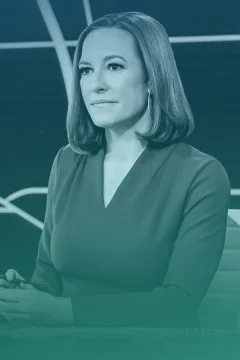One of the few pieces of major legislation enacted under former President Donald Trump was the Tax Cuts and Jobs Act. Many of the provisions in that law are set to expire in 2025, making it one of the biggest potential issues to be decided in next year’s presidential election. Some of Trump’s advisers are reportedly already discussing what a second term’s economic plan would include, and the only word I can find to describe what has surfaced so far is “Yikes.”
It would be one thing if Trump were only signaling that he just wants to keep the 2017 tax cuts in place, but apparently, he and his advisers also want to cut tax rates even deeper for individuals and corporations. The 2017 tax cuts were heavily skewed toward the top earners in the country and didn’t deliver on Trump’s promised deficit reduction. Even so, President Joe Biden has indicated that he’d like to see Congress keep the cuts for most households. Doing so would mean an additional estimated $1.5 trillion deficit over the next 10 years, which isn’t exactly the model of fiscal health, but at least Biden wants to raise taxes on the wealthy and corporations to offset those costs.
As for Trump’s new plan for further cuts, those cuts wouldn’t be paid for by taxing high-income earners or multibillion-dollar companies. Instead, in an idea Trump has floated on the campaign trail, the hole blown in the deficit would be covered with a massive 10% tariff on all goods imported into the U.S.
Could such a move raise billions for the federal government? Well, sort of. The tariffs against China during Trump’s term did double the tariff revenue collected from 2017 to 2019. But foreign exporters didn’t pay the majority of the tariffs, as Trump repeatedly and falsely claimed; those costs were borne mostly by American companies and consumers. And the vast majority of the money went right back out the door to bail out farmers who were caught up in the retaliatory tariffs China slapped on American agricultural goods.
Left unclear is what would be the point of raising the tariffs in the first place.
That’s small potatoes, though, compared to a potential plan former House Speaker and informal Trump adviser Newt Gingrich floated to The Washington Post. Gingrich, who sees himself as a real ideas man and promised during his 2012 presidential campaign to establish a permanent base on the moon, wants Trump to use Alaska’s oil revenue sharing as a model for how to distribute any new tariff revenue. Basically, the idea is to boost the U.S. economy by raising tariffs but then use all the resulting money to offset the costs of raising tariffs. Left unclear is what would be the point of raising the tariffs in the first place.
It’s the equivalent of unleashing feral cats to deal with a city’s rat problem. What to do about the resulting cat problem? Why, have every household adopt a cat or two. Your child is allergic? You don’t like cats? Well, too bad; cats are an important part of the anti-rat strategy. There, you see? Simple problem, simple solution!
Even the parts of Trump’s economic plan that are meant to help the rich and prosperous are likely to be kneecapped by his continued refusal to understand how the heck tariffs actually work.
Not all of Trump’s advisers are on board with that plan, though, according to the Post. At least not Arthur Laffer, who, as an economic adviser to President Ronald Reagan, championed “supply-side economics,” the idea that lower classes benefit when the wealthy get wealthier. He also lent his name to the Laffer Curve, which proposes that cutting taxes leads to the government’s collecting more revenue. Neither idea has ever proved to be correct in the slightest. Income inequality between the wealthiest 1% and everybody else really took off under Reagan, and it’s now a yawning chasm. Yet Laffer remains in high demand among Republicans and conservatives looking for someone to provide cover for their worst economic policies. But not even he supports the Alaska-like plan.
Other economic advisers to Trump are more focused on lowering the corporate tax rate. The Tax Cuts and Jobs Act dropped the rate major corporations pay from 35% to 21%. As part of the Build Back Better Act, Biden wanted to bump those rates back up to 28%, but Sen. Kyrsten Sinema, now I-Ariz., tanked that effort in the slimmed- down legislation that passed as the Inflation Reduction Act. Democrats did manage to pass a minimum corporate tax of 15% as part of the IRA, bringing the U.S. in line with a proposed global minimum rate that Biden and the European Union have been striving for. The idea being kicked around now among Team Trump is to drop the corporate rate to that 15% minimum, or even lower, kicking off a new international race to the bottom.
None of these ideas aim to help working-class people. Nor is the intention to invest in the many broken things in the country that are still left unfinished even after the IRA and the bipartisan infrastructure law passed. Even the parts of Trump’s economic plan that are meant to help the rich and prosperous are likely to be kneecapped by his continued refusal to understand how the heck tariffs actually work. Meanwhile, none of it can happen unless Republicans enjoy the same dominance over Washington that they held when the Trump tax cuts were initially passed. If that’s not something worth fighting in the 2024 election, then I don’t know what is.
Hayes Brown is a writer and editor for MS NOW Daily.












